IPS vs OLED – Which display to choose and why?
 Displays have been evolving, with refresh rates and resolution increasing exponentially. Nowadays, the most used panels are IPS and OLED panels, with IPS being the favorite in terms of the sheer number of devices that use them. OLED displays have so far been reserved for premium devices, laptops, TVs, phones, tablets, etc.
Displays have been evolving, with refresh rates and resolution increasing exponentially. Nowadays, the most used panels are IPS and OLED panels, with IPS being the favorite in terms of the sheer number of devices that use them. OLED displays have so far been reserved for premium devices, laptops, TVs, phones, tablets, etc.
However, in the past year or two, we’ve seen more and more manufacturers use OLED panels for more than their flagship products. So now, if you have to pick one of the two, what should you do? Today we’ll give you all the information you need to choose for yourself, including potential drawbacks as well as all pros and cons that both have to offer. We’ll also show you how our display profiles help with improving the work of displays. You can learn more about them here.
IPS – In-Plane Switching
IPS is a technology for LCDs, where the liquid crystal is placed between two glass surfaces. Then a backlight, which usually consists of tiny LEDs, shines behind it. Then, the light goes through an RGB filter, which blocks the unwanted colors from it, and allowing, for example, only blue light to pass through it, after which you see the Blue Screen of Death on your monitor. Compared to the older TN displays, in which the crystals are in a fluid state, with IPS panels, the crystals are in a fixed position with the glass, so viewing angles and contrast ratio, and color reproduction are consistent and better than their TN counterparts.
OLED
OLED or organic light-emitting diode if you want the longer version, is a display technology where the pixel is its own light source. What’s so organic about it? Well, OLED diodes are usually made from organic compounds, which means that the compound includes carbon and hydrogen in its molecular makeup. Another benefit is that OLED panels have individual backlighting for each pixel, which is why dark colors and blacks look as good as they do. Due to the way they’re made, finished products with OLED screens can be thinner, especially TVs and monitors, as well as screens for laptops. And how do you get colors with OLED panels? The organic compounds, when put under current, give off some of their energized electrons, which transform into Photons, which are light particles. Depending on the strength of the current, the Photon has a certain color, so regulating the currents is how the OLED matrix is able to produce different colors.
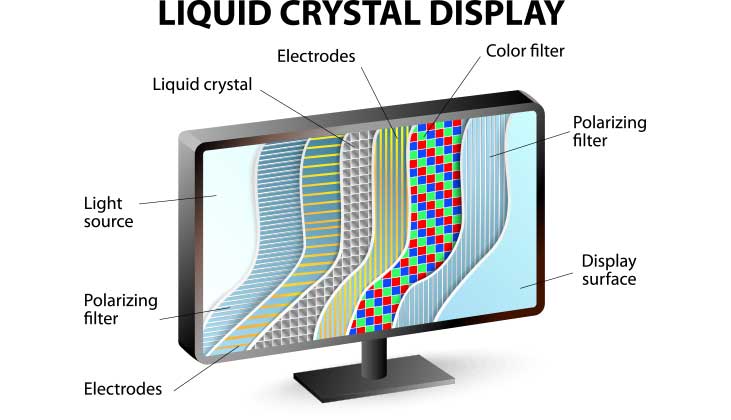

Viewing angles
Now, let’s compare the two and see which one fits your need better, across all display characteristics. Starting off with the viewing angles, both IPS and OLED panels have great viewing angles, so content appears great, and colors are vivid, regardless of if you’re looking at the screen at an angle. However, due to the backlighting of OLED displays, they can be considered to have even wider and better angles.
IPS
OLED
Contrast ratio and Brightness
First of all, let’s see how contrast ratio is calculated. The formula is right here (L1 + 0.05) / (L2 + 0.05), whereby: L1 is the relative luminance of the lighter of the colors, and L2 is the relative luminance of the darker of the colors. Since OLED panels reproduce dark colors by simply turning off their pixels and leaving them black, there’s essentially 0 luminance coming from them, so the relative luminance of the lighter colors is infinitely higher. This makes OLED panels able to reproduce much deeper and darker black colors, which on the other hand improves the visibility of light colors as well. This is especially important if you’re watching a movie with dark scenes, like The Batman, or any other for that matter.
As for brightness, both IPS and OLED panels can get very bright. Up until recently, OLED displays had the edge, however, IPS panels continue improving and even things out, by utilizing MiniLED backlighting, so it can reach higher brightness and improve the contrast ratio significantly. However, they still can’t reach the contrast ratio of OLED panels. Below are the results of our brightness uniformity test, which is important for ensuring uniform colors across the entire display area.
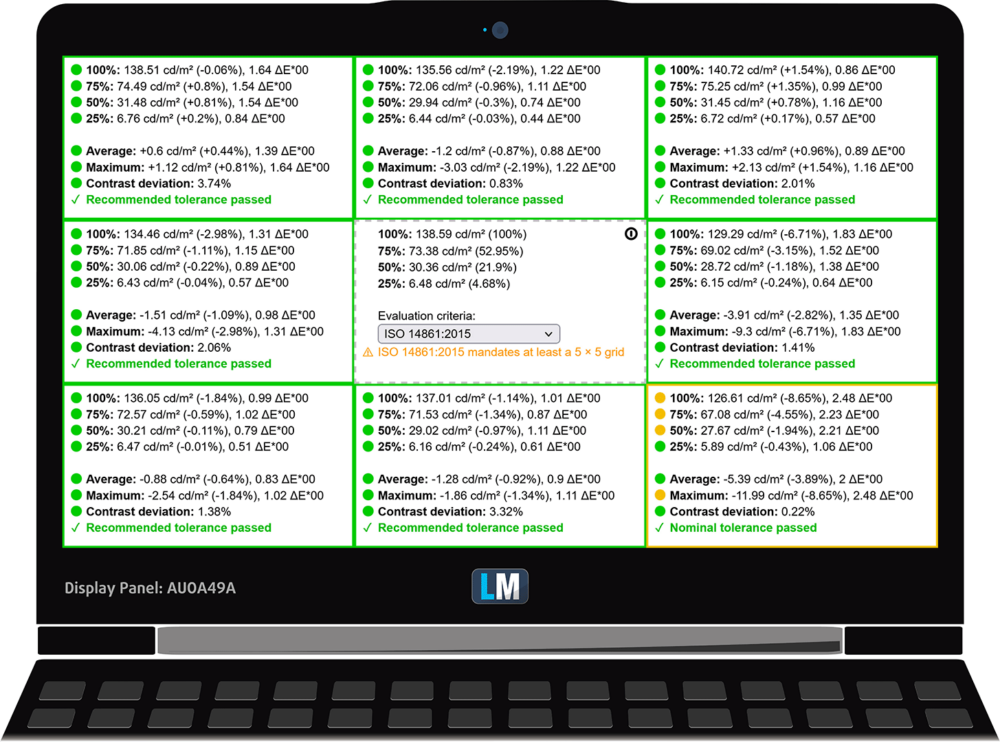 IPS
IPS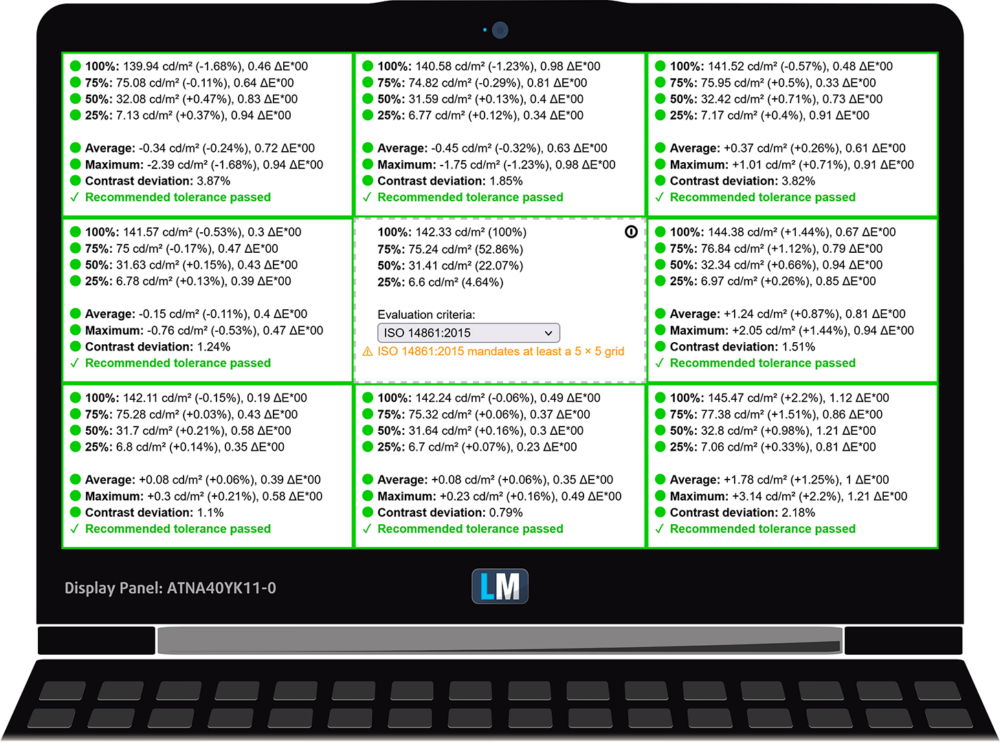 OLED
OLEDColor coverage
Now we get to the fun stuff, namely the color coverage. We’ve seen both IPS and OLED panels reach pretty high on the scale, but in total, OLED panels almost always deliver very wide color gamuts, with 100% sRGB or 100% DCI-P3. On the other hand, if you want the absolute widest color coverage possible, IPS panels can go as high as Adobe RGB, which is the widest gamut that’s professionally used in the design world.
Color accuracy
This is where IPS technology shows off its big positives, as IPS panels are generally more accurate than their OLED counterparts, so they are the preferred choice if you’re a professional designer and do this for a living. However, we’ve done a bunch in order to improve the accuracy on any laptop, thanks to our display profiles. Our Design and Gaming profile is aimed at designers who work with colors professionally and for games and movies as well. Design and Gaming take display panels to their limits, making them as accurate as possible in the sRGB IEC61966-2-1 standard for Web and HDTV, at white point D65.
Here you can see the difference between an image without our profile, as well as after applying our profile.
 Without profile
Without profile With profile
With profileHere is a result of the MSI Stealth 16 Studio, which has a 16-inch QHD+ 240Hz IPS display, which reaches a delta E value of 0.6 once we apply our profile. Delta E is used to measure accuracy, with values below 2 being considered accurate, while the human eye can’t distinguish colors with values lower than 1, so it’s fair to say that the IPS panel is incredibly accurate.
MSI Stealth 16 Studio (A13V) – 16-inch QHD+ 240Hz IPS panel.
Acer Swift Go 14 (SFG14-71) – 14-inch 2.8K 90Hz OLED panel
Response times
In terms of response times, OLED displays are known to be quicker in that regard. Here are the results of a high refresh-rate gaming-oriented IPS panel inside the MSI Stealth 16 Studio as well as the results of the Acer Swift Go, a 14-inch daily driver with a good chunk of performance and creator capabilities.
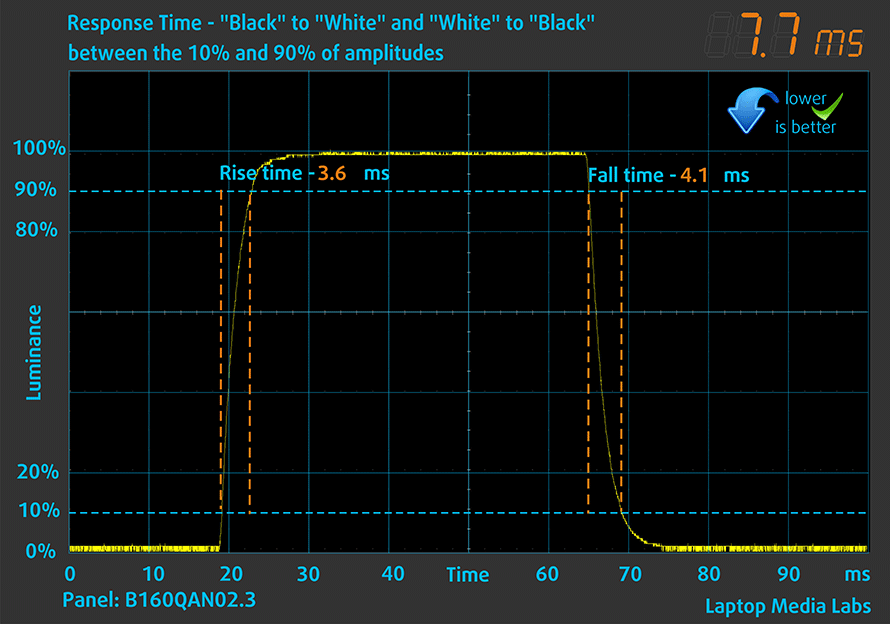 IPS
IPS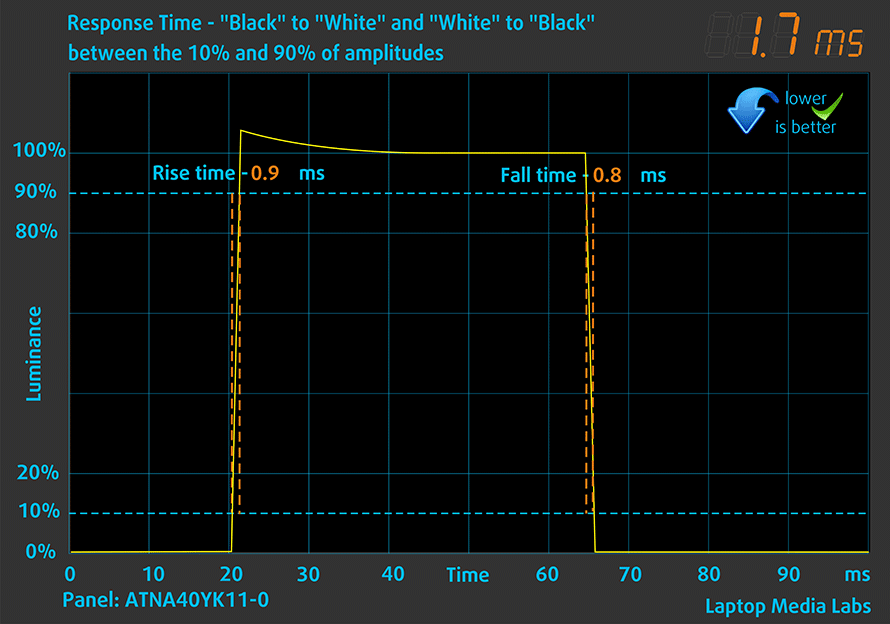 OLED
OLEDPulse-width modulation
PWM is an enemy of all displays and your eyes as well, as while you can’t feel it, your eyes and brain certainly can. It’s a way of controlling brightness, where the luminance of the display itself isn’t affected. What happens is that the display flickers, and shuts on and off again consistently, at a certain frequency. This flickering is noticed by your eyes, which have to dilate and constrict their pupils super fast in order to calibrate to the light that’s constantly being shut on and off. This can be tiring, in turn causing headaches and eye soreness. From our experience, OLED panels have been frequent offenders in using PWM. Some IPS models do so too, however, it’s a much rarer occurrence.
Thankfully, our Health-Guard profile is able to help, eliminating the harmful Pulse-Width Modulation (PWM) and reducing the negative Blue Light which affects our eyes and body. Since it’s custom tailored for every panel, it manages to keep the colors perceptually accurate. Health-Guard simulates paper so the pressure on the eyes is greatly reduced.
 IPS
IPS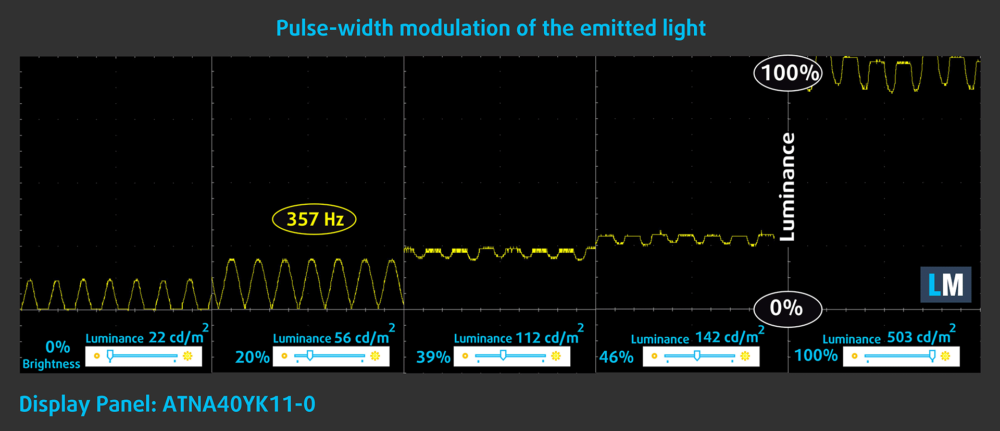 OLED
OLEDConclusion
To summarise everything up to now, purely for entertainment, OLED panels reign supreme, as the contrast ratio and the punchy image that they deliver is simply out of this world. On the other hand, for professional use by designers and other color-related work, a well-calibrated IPS panel with high-color coverage is unbeatable. It’s also better for prolonged use like an 8-hour work day or even longer for people who grind hard, thanks to the lack of PWM usage. When choosing a laptop, a monitor, or a TV, you should always go on a case-by-case basis and read reviews from both consumers and outlets like us, in order to see what exactly each product has to offer.
Which do you prefer between IPS and OLED and why is it so? Maybe your profession or something else, spark the conversation down below.
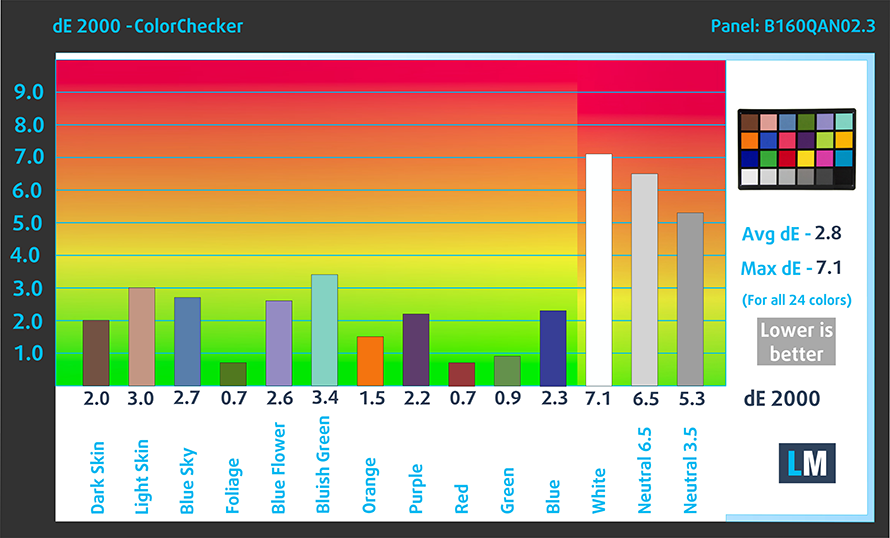
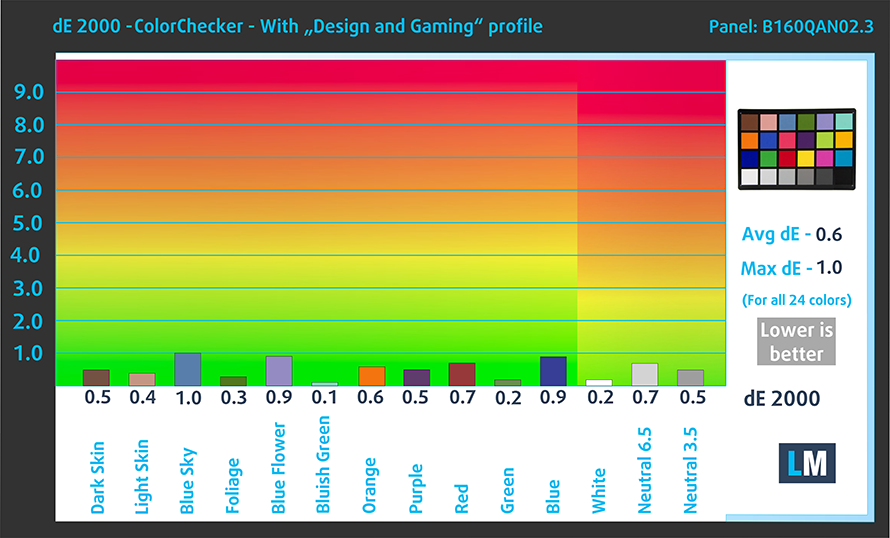










Posso solo dire che ho esperienza solo con un portatile HP ENVY x360 15-ew0007 nl i7
Volevo decisamente un pc OLED ma io da profano mi sono fatto abbindolare dal venditore che asseriva che il monitor IPS o OLED sono la stessa cosa, l’ IPS indubbiamente mi sembra buono, ma non avendo avuto mai un OLED non posso giudicare quale dei due è il migliore
hallo,graag een mening/advies. Laptop , IPS scherm, scherpte 2.5K , 120Hz ,2560×1600 pixels , helderheid 350 cd/m2 of OLED 60 Herz , helderheid 500 cd/m2 ???